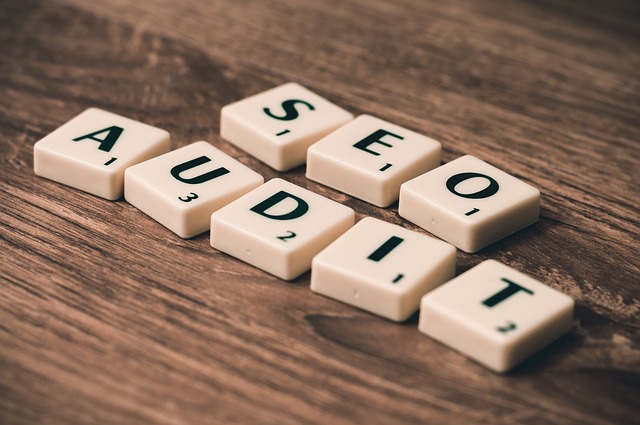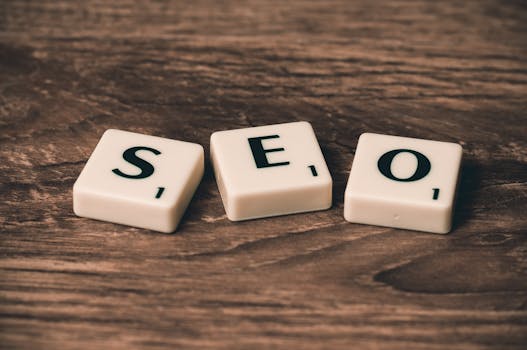How to Use Header Tags Effectively for SEO
Common Mistakes to Avoid with Header Tags
Many folks think using multiple H1 tags on a page is fine. I believe it’s a big mistake! Sticking to one H1 tag helps search engines understand your content better. It’s that simple.
Another common blunder? Ignoring the hierarchy of H-tags. Using H3 tags without proper H2 headers can confuse both users and search engines. Always maintain a clear structure!
Some people stuff keywords into header tags. Sure, keywords matter, but overdoing it feels spammy. Focus on clarity instead. Your readers will appreciate it.
Many assume that header tags are just for SEO. But they’re also about user experience! According to Joshua Hardwick from Ahrefs, “H1 tags help search engines to understand the structure of a webpage and improve user experience by clearly labeling the main topics.”
What about those who neglect mobile optimization? Ignoring how headers appear on mobile can lead to a poor user experience. Test your site on different devices!
Now, let’s talk about design. Some think header tags should be plain text. But I think incorporating visual elements can boost engagement. Make your headers pop!
Lastly, many overlook accessibility. Header tags are crucial for screen readers. They help visually impaired users navigate your content smoothly. Don’t underestimate their power!
In conclusion, avoid these common pitfalls. Header tags are more than just SEO tools; they enhance your entire website experience.
Impact of Header Tags on User Experience
Header tags are more than just SEO tools; they shape how users interact with your content. Here’s how to use them effectively for a better user experience:
- Clear hierarchy is key. Use one H1 tag to define the main topic. It sets the stage for everything else.
- Subheadings guide readers. H2 tags break down sections, making it easier for users to skim and find what they need.
- Keep it concise. Short and descriptive headers improve readability and encourage engagement.
- Use keywords wisely. Incorporate relevant keywords in headers to boost SEO without sounding forced.
- Maintain consistency. Uniform formatting across headers creates a cohesive reading experience.
- Experiment with design. Blend functionality with visual elements to make headers stand out and engage users.
- Accessibility matters. Proper header usage helps screen readers navigate content, enhancing the experience for visually impaired users.
- Test and iterate. Analyze user behavior to refine header strategies and improve interaction rates.
May 31, 2024 … Boost your SEO with effective header tag usage. Learn how to optimize header tags to improve content scannability, search engine visibility, …
Here's how to use headings properly on your site. … How to use headings on your site. 10 October 2023 | Tags Content SEO, Readability, SEO copywriting …
Mar 21, 2019 …Use one <h1> tag. · Don't forget about hierarchy <h1> through <h6> (though Google currently claims it's not of top importance, it's important to …
Using your SEO strategy, develop or redevelop content to improve your rankings. … Don't forget to use bold, italics, heading tags (especially an H1), and …
Five Ways to Improve Your Site’s Ranking (SEO) | Michigan Tech
Essential H1 to H6 Tag Guidelines
This list outlines key guidelines for effectively using header tags to enhance SEO and user experience.
- Use one H1 tag per page. It signals the main topic clearly.
- Follow the H1 with H2 tags for major sections. This helps in organizing content.
- Utilize H3 tags for subsections. They provide detail without overwhelming readers.
- Keep titles concise. Aim for 60 characters or less for better visibility.
- Incorporate relevant keywords in header tags. This boosts SEO and aligns with user intent.
- Maintain consistent formatting. A uniform style enhances readability and user experience.
- Experiment with header tag styles. Creative formatting can make your content more engaging.
- Remember accessibility. Proper header use aids screen readers, improving usability for all users.
- Regularly review and update headers. Adjustments can reflect changes in content focus or SEO strategies.
- Don’t ignore the H4 to H6 tags. They can provide additional structure and clarity.
The Importance of Header Tags for SEO
Header tags are not just pretty labels; they’re fundamental to SEO. They help search engines understand your content structure. This clarity boosts your chances of ranking higher.
Most people think using one H1 tag is enough. I say, it’s about how you use them. Each header should guide readers through your content.
Did you know that proper header tags can significantly improve user experience? According to Joshua Hardwick from Ahrefs, “H1 tags help search engines to understand the structure of a webpage and improve user experience by clearly labeling the main topics.” This means your content becomes more accessible and engaging.
Now, let’s talk about mistakes. Many folks overstuff keywords in headers. This tactic can backfire. Keep it natural and relevant.
Some argue that using multiple H1 tags can confuse search engines. But I believe that in specific contexts, like single-page applications, it can enhance accessibility. It’s about experimenting with what works best for your audience.
Don’t forget about the impact on content marketing. Aligning header tags with your marketing goals can drive targeted traffic. Each header can represent a measurable unit of performance, making it easier to track success.
So, let’s rethink how we use header tags. They’re not just for SEO; they’re a tool for enhancing the entire user journey. As Andrew Zarudnyi from SE Ranking puts it, “Headings are essential for organizing content effectively, enhancing both user experience and search engine understanding.” Embrace this and watch your engagement soar!
Enhancing Accessibility with Header Tags
Header tags are not just for SEO; they’re a lifeline for accessibility. Using them correctly helps visually impaired users navigate content effortlessly. Screen readers rely on these tags to provide structure, making it easier for everyone to consume information.
Many think header tags are purely for search engines, but I believe they’re essential for user experience. When structured well, they guide readers through the content, breaking it down into digestible sections. This is a win-win for both users and search engines.
Most people stick to the H1-H6 hierarchy, but I think there’s room for creativity. Some modern sites use multiple H1 tags, especially in single-page applications. This can enhance accessibility and make the content more engaging.
According to SE Ranking, “Headings are essential for organizing content effectively, enhancing both user experience and search engine understanding.” This highlights the dual role header tags play in both SEO and accessibility.
Let’s not forget that structured content meets legal standards too. It’s not just about being nice; it’s about compliance. Using header tags properly is a step toward a more inclusive web.
Incorporating headers thoughtfully can lead to a better overall site experience. Everyone deserves easy access to information, and proper header usage is a key part of that. So, let’s make our content accessible and user-friendly!
Best Practices for Structuring Header Tags
Using header tags effectively is a game changer for SEO. They organize your content and signal importance to search engines. One H1 tag per page is the golden rule. This tag should clearly convey the main topic.
After that, use H2 tags for major sections and H3 tags for subsections. This hierarchy creates a clear structure that both users and search engines appreciate. According to Ankit Vora from Semrush, “Using only one H1 tag per page creates a hierarchy that benefits both users and search engines, enhancing the overall user experience.”
Another tip? Incorporate relevant keywords in your header tags. This not only helps with SEO but also makes your content more discoverable. Keep titles concise and engaging. Your headers should grab attention and provide a clear idea of what follows.
Now, let’s talk about alternatives. Most experts advocate for a strict H1-H6 structure, but I think there’s room for creativity here. What if you added design elements to your headers? This could break the monotony and elevate user engagement. Dynamic designs can complement header functionality.
On another note, header tags can significantly enhance web accessibility. They help screen readers interpret content logically. This is not just about SEO; it’s about making your site usable for everyone. Accessibility should be a priority.
Lastly, integrating header tags into your content marketing strategy is a smart move. They can act as measurable units of performance, aligning with your marketing goals. This approach transforms header tags into powerful tools for engagement.
Nov 28, 2023 … Optimizing SEO with header tags involves strategically using HTML header elements (H1-H6) to structure webpage content. Incorporate relevant …
Nov 7, 2023 …Heading tags are HTML elements that indicate the hierarchy and relevance of your content. They range from H1 to H6, with H1 being the most important and H6 …
Alternative Strategies for Using Header Tags
Most people think header tags should strictly follow the H1-H6 hierarchy. But I believe flexibility can lead to better user engagement. For instance, using multiple H1 tags in specific contexts can enhance accessibility and create a more dynamic webpage experience.
According to Joshua Hardwick from Ahrefs, “H1 tags help search engines to understand the structure of a webpage and improve user experience by clearly labeling the main topics.” However, I argue that breaking this mold could lead to innovative content structures that resonate more with users.
Many experts advocate for one H1 tag per page. But I think that experimenting with creative H-tag formatting could yield fresh perspectives. Incorporating visual elements alongside headers could make the content pop and keep readers engaged.
Another overlooked aspect is the role of header tags in content marketing. Aligning header tags with marketing objectives can drive targeted traffic and improve engagement metrics. Each header can serve as a measurable unit of content performance, making it easier to track campaign success.
Let’s not forget the impact of header tags on accessibility. Using structured headers allows screen readers to interpret content logically, creating a seamless experience for visually impaired users. This not only meets legal standards but also enhances usability for everyone.
So, while traditional wisdom has its place, I think it’s time to challenge the status quo and explore alternative strategies for using header tags effectively.
Key Benefits of Proper Header Tag Usage
Using header tags effectively can transform your SEO strategy. Here’s how they can benefit your site:
- Structured content improves readability. It helps users navigate easily, making information accessible.
- One H1 tag per page is a must. This boosts SEO effectiveness by clearly defining the main topic.
- Header tags enhance content organization. They allow search engines to understand the hierarchy of information.
- Experimenting with header tag formats can increase engagement. Unique layouts can captivate users and keep them on your page longer.
- Proper use of header tags supports web accessibility. They enable screen readers to interpret content logically, benefiting all users.
What are header tags and why are they important?
Header tags are like signposts for your webpage. They help organize content, making it easier for both users and search engines to understand.
Many people think you should only use one H1 tag per page for clarity. I believe experimenting with multiple H1 tags can actually enhance engagement, especially in single-page applications. This approach can cater to accessibility needs, allowing screen readers to navigate content more effectively.
According to Joshua Hardwick from Ahrefs, “H1 tags help search engines to understand the structure of a webpage and improve user experience by clearly labeling the main topics.” That’s a solid reason to pay attention to your header tags!
Header tags also play a key role in content marketing. Aligning them with marketing goals can help track campaign success more effectively. Each section marked by a header acts as a measurable unit of content performance.
So, don’t just stick to the basics. Think outside the box with your header tags!
Can I use multiple H1 tags on my website?
Most people think using one H1 tag per page is the golden rule. But I see it differently. In some contexts, especially with single-page applications, multiple H1 tags can actually improve user experience.
According to Joshua Hardwick from Ahrefs, “H1 tags help search engines to understand the structure of a webpage and improve user experience.” This traditional view holds weight, yet it doesn’t account for evolving web practices.
Using multiple H1 tags can enhance accessibility. Screen readers interpret content logically, allowing visually impaired users to navigate smoothly. I believe this approach can create a more engaging structure.
While some might argue against it, experimenting with H1 usage could lead to innovative content presentation. Why stick to old norms when fresh perspectives can yield better engagement?
For more insights, check out this article by Ahrefs and see how header tags can be rethought in modern web design.
How many header tags should I use on a page?
Most people think you should stick to one H1 tag per page. I disagree because using multiple H1 tags can work wonders for specific contexts, like single-page applications. It’s that simple!
Header tags create a clear structure. They guide both users and search engines. According to Joshua Hardwick from Ahrefs, “H1 tags help search engines to understand the structure of a webpage and improve user experience.” I believe this is true, but flexibility can lead to more engaging content.
Many believe that sticking strictly to H1-H6 hierarchy is the way to go. However, I think experimenting with header tags can enhance creativity. Using them in unique ways can make your content pop!
Don’t forget about accessibility! Header tags can significantly improve usability for visually impaired users. When structured well, they allow screen readers to interpret your content logically. This is a win-win for everyone.
Ultimately, it’s about finding what works for your specific content. Test different approaches and see how your audience responds. The key is to keep experimenting for the best results!
How can I improve accessibility using header tags?
Header tags aren’t just for SEO; they’re a lifeline for accessibility. Using header tags properly helps screen readers navigate content smoothly. This means visually impaired users can understand your site better.
Many believe that header tags are only about structure. I think they’re about inclusivity because clear headings make content digestible for everyone. It’s that simple!
Integrating header tags logically allows screen readers to interpret content hierarchically. This structured approach meets legal standards and enhances usability for all users. As Joshua Hardwick from Ahrefs puts it, “H1 tags help search engines to understand the structure of a webpage and improve user experience.”
Many folks stick to traditional uses of header tags, but I think we should explore creative formatting. Adding design elements alongside headers can boost engagement while keeping clarity intact.
Let’s not forget the impact of header tags on content marketing. Aligning them with marketing goals can drive targeted traffic and improve metrics. This shift makes discussions around header tags even more relevant in today’s digital landscape.
What are some common mistakes with header tags?
Many folks think using multiple H1 tags is okay. I disagree because it confuses search engines. Stick to one H1 per page for clarity.
Another common blunder is neglecting the hierarchy of header tags. It’s easy to throw in H2s and H3s randomly. But a proper structure guides both users and search engines.
Some people overlook keyword optimization in header tags. Sure, they might be focused on content, but keywords in headers matter. They signal to search engines what your page is about.
Many believe that header tags are just for aesthetics. But they actually enhance user experience and SEO. A well-structured page is more inviting.
Lastly, ignoring accessibility is a huge mistake. Header tags help screen readers navigate content. This is a critical aspect of web usability.
According to Joshua Hardwick from Ahrefs, “H1 tags help search engines to understand the structure of a webpage and improve user experience by clearly labeling the main topics.” So, let’s get it right!
Exploring new strategies can be eye-opening. Most people stick to the standard practices, but I think experimenting with creative H-tag formatting can boost engagement. Incorporating visuals or interactive elements alongside headers can make your content pop!
Don’t forget, header tags can also play a role in content marketing. Aligning them with marketing goals can drive targeted traffic and improve metrics.
How do header tags impact SEO rankings?
Most people think header tags are just for structure. I believe they’re a secret weapon for SEO. Using header tags effectively can significantly boost your search rankings.
Each header tag, from H1 to H6, tells search engines what’s important. The H1 tag is your page’s headline, and it should scream relevance! According to Joshua Hardwick from Ahrefs, “H1 tags help search engines to understand the structure of a webpage and improve user experience by clearly labeling the main topics.” That’s why it’s crucial to nail your H1.
But here’s the kicker: many believe you should stick to one H1 tag per page. I think it’s worth experimenting with multiple H1s in specific contexts, like single-page applications. This can enhance user engagement and accessibility.
According to Andrew Zarudnyi from SE Ranking, “Headings are essential for organizing content effectively, enhancing both user experience and search engine understanding.” So, don’t underestimate the power of H2s and H3s either; they play a vital role in content hierarchy.
Incorporating keywords in your headers is a no-brainer. It’s an easy way to signal to search engines what your content is about. Experimentation is key! Try different formats and see what resonates with your audience.
Lastly, let’s talk accessibility. Using header tags correctly not only helps SEO but also makes your site more usable for everyone. Structured content is easier for screen readers, making your site more inclusive.
Header tags are your best friend for readability. They break up text and guide readers. Using them wisely keeps users engaged.
Most experts say one H1 per page is key. But I believe experimenting with multiple H1s can make your content pop! This approach can enhance user experience and accessibility.
According to Joshua Hardwick from Ahrefs, ‘H1 tags help search engines to understand the structure of a webpage.’ That’s why clarity matters!
And don’t overlook how header tags aid visually impaired users. They help screen readers navigate content smoothly. It’s a win-win!
So, why not shake things up? Try integrating creative design elements with your headers. It could lead to a more captivating user experience.
Many folks think using multiple H1 tags is fine. I disagree because it muddles the page structure. Sticking to one H1 tag makes it clear what the page is about.
According to Joshua Hardwick from Ahrefs, “H1 tags help search engines to understand the structure of a webpage and improve user experience by clearly labeling the main topics.” This clarity is what search engines crave!
Let’s not forget about accessibility. Using a single H1 tag helps screen readers navigate better, making your content more inclusive. It’s that simple!
Most people stick to traditional rules, but I think experimenting with H-tags could lead to fresh engagement strategies. Why not mix in some creative formatting? It could really captivate your audience.
Also, let’s chat about the impact of header tags on content marketing. Aligning H-tags with marketing goals can track performance effectively. It’s a win-win!
Most folks stick to traditional header tag structures. But I think mixing it up can really spark interest! Adding design elements or interactive features alongside headers can create a more engaging experience.
For example, using visuals with H-tags can break monotony and catch the reader’s eye. As Joshua Hardwick from Ahrefs says, “H1 tags help search engines to understand the structure of a webpage.” But what if we could make that structure more exciting?
Instead of just following the H1-H6 hierarchy, why not play with formats that resonate with your audience? I believe this approach not only boosts engagement but also enhances clarity. Let’s rethink header tags as tools for creativity!
Structured header tags are a game changer! They create a clear hierarchy that guides readers through your content.
One H1 tag per page? Absolutely! It’s the golden rule for SEO success.
Many think header tags are just for SEO. But I believe they’re vital for user experience, too.
According to Joshua Hardwick from Ahrefs, “H1 tags help search engines to understand the structure of a webpage and improve user experience by clearly labeling the main topics.” That’s powerful!
Let’s not forget about accessibility. Proper header tags make it easier for screen readers to navigate.
Most people think sticking to traditional H1-H6 formats is best. I think experimenting with multiple H1s can offer fresh perspectives!
It’s all about engaging your audience while keeping your content organized. So, play around with those headers!
Header tags are not just for SEO; they’re a lifeline for accessibility. Using structured headers helps visually impaired users navigate content easily. Screen readers rely on header tags to interpret sections logically, making the experience seamless.
Most folks think header tags are purely for search engines. I believe they’re vital for inclusivity because they ensure everyone can access information. This approach not only meets legal standards but also enhances usability for all.
Integrating accessibility into your header strategy is a game changer. It’s not just about ranking higher; it’s about reaching everyone!
According to Joshua Hardwick from Ahrefs, “H1 tags help search engines to understand the structure of a webpage and improve user experience.”
Let’s not ignore that header tags can transform user engagement. They’re a bridge connecting content to diverse audiences.

Albert Mora is an internationally renowned expert in SEO and online marketing, whose visionary leadership has been instrumental in positioning Seolution as a leader in the industry.












